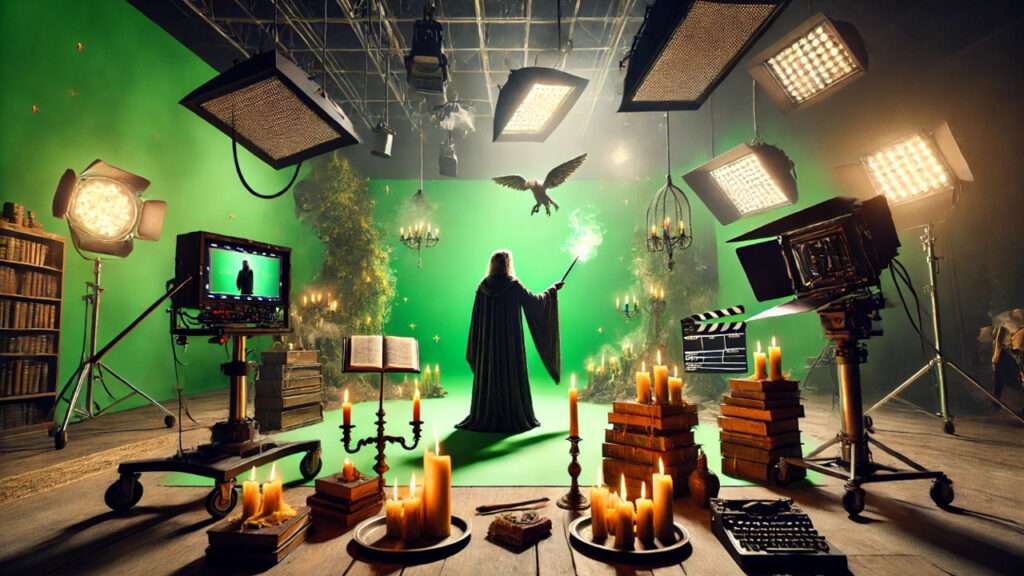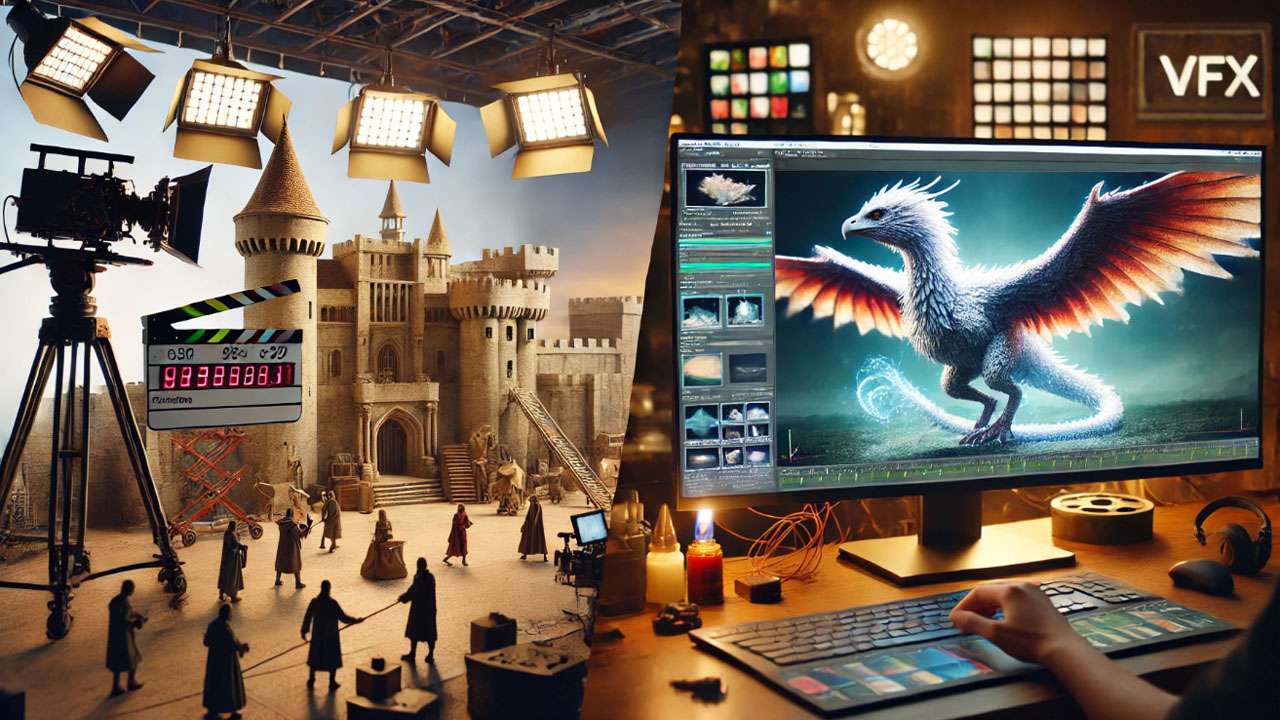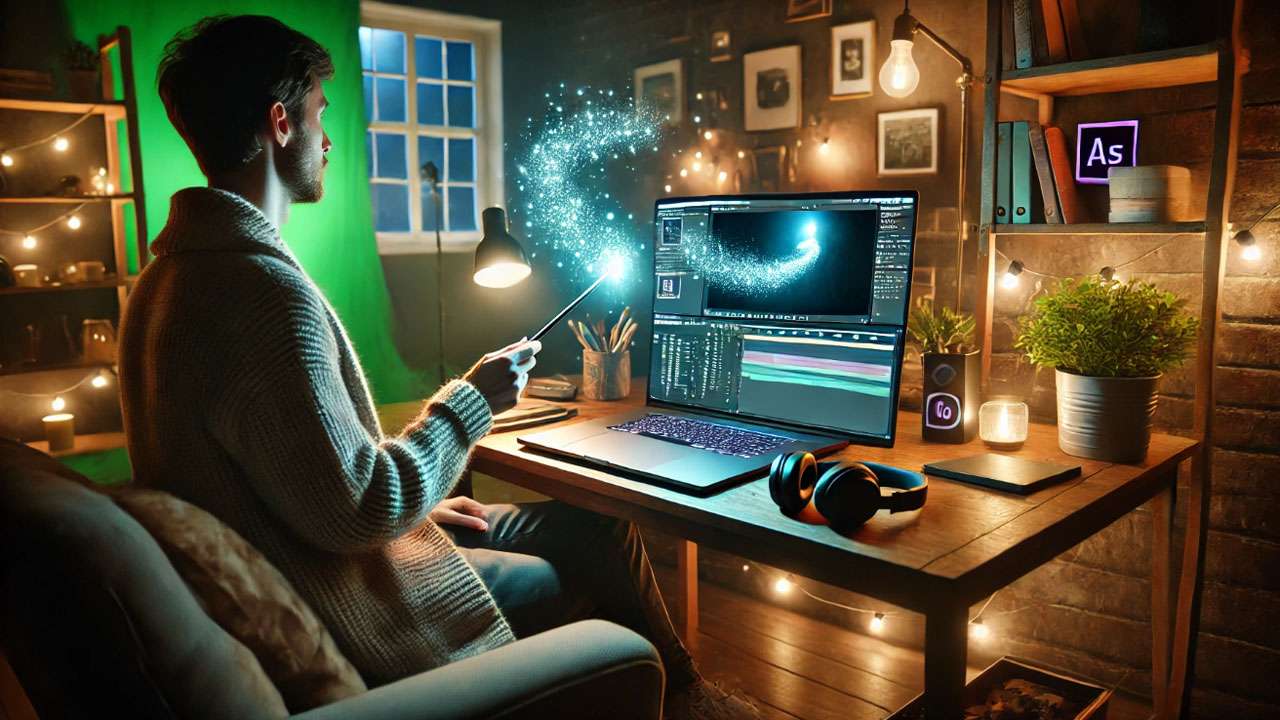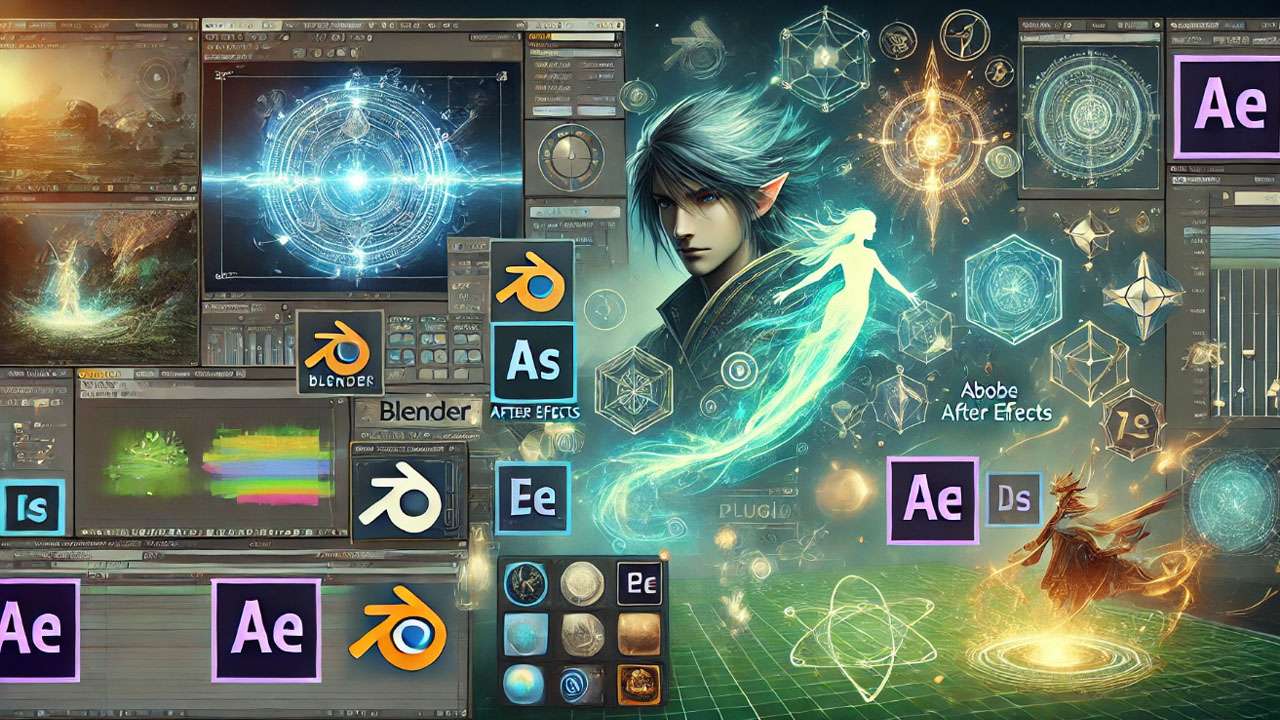
How to Create Stunning Special Effects in Harry Potter Films: Techniques and Secrets Revealed
Ever wondered how the magical world of Harry Potter came to life so vividly on screen? 🧙♂️ From soaring broomsticks to fire-breathing dragons, the special effects in Harry Potter films transformed J.K. Rowling’s words into jaw-dropping cinematic reality. But here’s the real magic: these stunning visuals weren’t just the work of spells—they were crafted through groundbreaking techniques, clever tricks, and some seriously creative problem-solving.
If you’ve ever found yourself asking how did they do that?, you’re not alone. This article pulls back the enchanted curtain to reveal the secrets behind the visual wizardry—giving fans, filmmakers, and curious minds a backstage pass into one of the most iconic film franchises in history. Ready to discover the techniques that made Hogwarts feel real? Let’s dive in.✨
Table of Contents
Toggle1: Understanding the Magic of Harry Potter’s Special Effects ✨
The special effects in Harry Potter weren’t just about creating cool visuals—they were essential to bringing the wizarding world to life. Whether it was a spell exploding mid-air, a hippogriff taking flight, or a game of Quidditch in full swing, each scene relied on a combination of practical effects, CGI (computer-generated imagery), and clever visual tricks to feel believable and immersive.
Why Special Effects Matter
Special effects are more than just eye candy. They help tell the story in a way that words alone can’t. In Harry Potter, they created a consistent magical atmosphere that pulled audiences into the world of Hogwarts—and made them believe it was real. Without these effects, much of the magic would fall flat.
The Blend of Real and Digital 🎥🧠

One of the secrets behind the franchise’s success was its seamless blend of practical effects (real objects and stunts) with digital wizardry. For example:
- Practical Effects: The floating candles in the Great Hall were originally real, suspended by wires.
- CGI Enhancements: Magical creatures like Buckbeak were animated using cutting-edge VFX and motion capture.
- Miniatures and Models: Hogwarts Castle wasn’t always digital—it was built as a detailed miniature for sweeping landscape shots.
Key Players Behind the Magic 🧙
Behind the scenes, entire teams of VFX artists, set designers, and animators collaborated to make each magical element work. Studios like Industrial Light & Magic and Framestore played crucial roles, using groundbreaking techniques that would go on to influence Hollywood for years.
Takeaway: Learn from the Best
Understanding how the special effects in Harry Potter were created gives you a solid foundation to build your own movie magic. Whether you’re an aspiring filmmaker, content creator, or just a fan curious about how it’s done, learning the basics of this craft opens up a world of creative possibilities.
2: Essential Tools and Software for Creating Harry Potter-Style Effects 🧰✨
Want to recreate the spellbinding look of the special effects in Harry Potter? Whether you’re working on a short film, a fan project, or just exploring visual effects (VFX) for fun, using the right tools makes all the difference. The good news? Many of the same tools used by Hollywood studios are now available to independent creators, often for free or at low cost.
🎨 Visual Effects Software (VFX)
These programs help you create spells, magical creatures, explosions, and more.
- Adobe After Effects
A powerful, beginner-friendly tool for compositing, motion graphics, and visual effects. Great for wand sparks, flying objects, and spell impacts. - Blender (Free)
An open-source 3D software that rivals professional-grade programs. Perfect for modeling magical items, animating creatures, or even rendering a digital Hogwarts! - Autodesk Maya
Industry-standard for high-end 3D animation and modeling. Used in big-budget productions, including creature design and magical simulations. - Nuke by Foundry
Used in professional post-production to combine digital elements with live-action footage. Ideal for layering effects like cloaking, fire, or Patronus charms.
🔧 Must-Have Plugins & Assets
Plugins and assets can speed up your workflow and elevate the quality of your effects.
- Video Copilot’s Saber Plugin (Free)
Create glowing spell trails, magical shields, or enchanted energy beams—super easy to use in After Effects. - ActionVFX & ProductionCrate
These sites offer high-quality visual assets like smoke, fireballs, sparks, and magical flares—ready to drop into your project. - Unreal Engine (Free)
Ideal for real-time effects and virtual sets. Used increasingly in modern filmmaking for magical landscapes and dynamic action sequences.
🎥 Bonus Tools for Practical Effects
Many Harry Potter-style effects started with real-world elements:
- Fog machines for mystical atmosphere
- Green screens for wand duels and flying scenes
- LED lights for glowing props and magical auras
Blending practical effects with digital tools—just like the Harry Potter crew did—adds realism and depth to your visuals.
Final Tip: Start Simple, Then Scale 🪄
You don’t need a Hollywood budget to create magic. Start with free tools like Blender or After Effects, learn the basics, and build from there. With practice and creativity, you can create jaw-dropping results that capture the magic of the wizarding world—right from your laptop.
3: Step-by-Step Guide to Creating Iconic Harry Potter Effects 🪄💥
Ready to bring the magic to life? In this section, we’ll walk you through how to recreate three of the most iconic special effects in Harry Potter—wand spells, invisibility cloaks, and Patronus charms. These tutorials are beginner-friendly, don’t require expensive gear, and are designed to work with free or affordable software like Adobe After Effects and Blender.
🪄 1. Create a Wand Spell Effect (e.g., Expelliarmus or Lumos)

What You’ll Need:
- Adobe After Effects (or HitFilm Express)
- Video Copilot’s free Saber plugin
- A clip of someone pointing a wand
Steps:
- Import your video into After Effects.
- Create a new solid layer, then apply the Saber plugin.
- Use the Mask Path tool to trace the wand’s motion.
- Set the Saber style to “Electric” or “Fire” for a magical look.
- Tweak glow settings to match the color and intensity of spells like Stupefy or Lumos.
- Add a sound effect for extra realism 🔊
💡 Pro Tip: Slow down the motion slightly for dramatic effect, just like in the films.
🧥 2. Simulate an Invisibility Cloak
What You’ll Need:
- A green screen or consistent background
- Basic video editing software (After Effects, DaVinci Resolve)
Steps:
- Film two clips: one with the subject, one without (same camera angle).
- Use masking tools to isolate the subject and “erase” them from the scene.
- Add a ripple or shimmer effect to simulate the cloak’s distortion.
- Feather the edges and lower opacity for a smoother blend.
🎬 This trick was used in Harry Potter and the Sorcerer’s Stone and still holds up today!
🦌 3. Create a Patronus Charm
What You’ll Need:
- Blender (for 3D animal animation)
- After Effects (for glowing effects)
- Particle FX (optional)
Steps:
- Choose a 3D model of an animal (you can find free ones online).
- Animate it in Blender or download a pre-animated model.
- Export and bring it into After Effects.
- Apply a glow, shimmer, or energy effect using the Glow and Saber plugins.
- Add light rays or particle trails for a dreamlike glow 🌟
Wrap-Up: Magic Is in the Details 🔍
The special effects in Harry Potter might look complex, but with today’s tools, they’re surprisingly achievable. The key is layering simple techniques—glows, motion tracking, masking—to create believable, magical moments.
4: Secrets from the Harry Potter VFX Teams 🎬✨
Ever wondered how the special effects in Harry Potter looked so real—like magic was truly happening? The truth is, the visual effects (VFX) teams behind the films used a clever mix of creativity, practical effects, and digital mastery. In this section, we’ll uncover real insights and behind-the-scenes secrets straight from the wizards behind the camera.
🔍 Secret #1: Real Props Came First
Before diving into CGI, the filmmakers often started with practical props. Wands, flying brooms, and even floating candles were physically built and shot on set. This gave actors something real to interact with—making their performances more believable and helping the digital effects blend seamlessly.
💡 Takeaway: Use real-world props whenever possible. It grounds your effects in reality and makes your final video feel more natural.
🌟 Secret #2: Mix Practical + Digital Effects
The magic came alive by combining real and digital elements. For example, in Prisoner of Azkaban, the Hippogriff Buckbeak was a full-sized animatronic for close-up shots—and CGI for flying scenes. This hybrid method created a more immersive and believable creature.
🎨 Secret #3: Light Matching Is Everything
To make spells or creatures look like they belong in the scene, VFX artists matched the lighting and shadows exactly. If a glowing spell was cast, they added matching highlights on walls, faces, and surroundings.
⏳ Secret #4: Less Is More
Sometimes, the team held back on effects to let the story shine. A well-timed flicker of light or a subtle shimmer often made a bigger impact than overloading a scene with visuals.
🧠 Secret #5: Pre-Visualization (Previs) Was Key
Before filming big effects scenes, the team created animated mockups (called previs) to plan every camera move, effect, and actor cue. This saved time, cut costs, and ensured everything would work in post-production.
Final Thought: Learn from the Masters 🎓
The special effects in Harry Potter weren’t just magical—they were masterfully planned. By studying how the pros blended creativity with smart techniques, you can apply the same thinking to your own projects, no matter your skill level.
5: Common Mistakes and How to Avoid Them ⚠️✨
Even the most magical effects can fall flat if you don’t get the basics right. If you’re trying to recreate special effects in Harry Potter and something just doesn’t look right, chances are it’s one of these common mistakes. The good news? They’re easy to fix once you know what to watch out for!
❌ Mistake 1: Poor Lighting Match
The Problem: Your magical effect looks like it’s floating on top of the scene instead of blending into it.
How to Fix It:
Always match the lighting and shadows of your digital effects to the real footage. For example, if your scene is lit from the left, make sure your spell glows from the same direction.
❌ Mistake 2: Overusing Effects
The Problem: Every second of your video is packed with flashes, explosions, or glowing particles. It overwhelms the viewer.
How to Fix It:
Focus on quality over quantity. Use effects to enhance key moments, not to fill space. The Harry Potter films used restraint—each magical effect had purpose and timing.
❌ Mistake 3: Bad Motion Tracking
The Problem: Your spell or creature “slides” or doesn’t follow the actor or camera correctly.
How to Fix It:
Use reliable motion tracking tools (like After Effects’ built-in tracker) and always double-check that your effect sticks naturally to movement. If something feels off, adjust the tracking points or stabilize the shot.
❌ Mistake 4: Forgetting Sound Design
The Problem: Your visuals look great—but there’s no sound to support them. It feels empty or unfinished.
How to Fix It:
Always add sound effects for spells, impacts, whooshes, or creature roars. Even subtle audio cues boost realism and emotional impact.
❌ Mistake 5: Ignoring Real-World Physics
The Problem: Spells move too fast, creatures float unrealistically, or nothing reacts to the magic happening.
How to Fix It:
Observe real-world motion. Add slight delays, gravity effects, or recoil to your magical elements. Think about how wind, light, or debris would react to your effects.
Final Tip: Watch and Learn 🎥
One of the best ways to avoid these mistakes is to study scenes from the Harry Potter films. Watch how light, sound, and timing work together—and try to replicate them on a smaller scale.
Next, we’ll wrap things up with final tips and tools to keep improving your magical VFX skills. You’re almost ready to cast your own cinematic spells! 🧙♀️✨
6: Advanced Tips for Taking Your Effects to the Next Level 🚀✨
Once you’ve mastered the basics, it’s time to level up your magic. To truly match the cinematic quality of the special effects in Harry Potter, you’ll need to think like a visual storyteller—and add those expert touches that separate amateur from amazing.
🎯 Tip #1: Use Color Grading to Set the Mood
Harry Potter films used distinct color palettes—cool tones for suspense, warm glows for magic, and deep shadows for drama.

Actionable Insight:
Use tools like Lumetri Color in Adobe Premiere Pro or DaVinci Resolve to adjust the colors of your entire scene. This makes your VFX feel like part of a professional film.
🧠 Tip #2: Add Environmental Interaction
Great effects don’t just float—they interact with the world around them.
Actionable Insight:
If your spell hits a wall, show a scorch mark. If a Patronus appears, light up nearby objects with a glow. Use light layers, particle effects, or even dust and debris to show impact.
🔁 Tip #3: Use Precomps and Adjustment Layers
To manage complex scenes with multiple effects, work in precompositions and adjustment layers in After Effects.
Why It Works:
This keeps your workflow organized and lets you apply effects (like blur, color, or shake) across multiple elements all at once—saving time and creating consistency.
🐉 Tip #4: Animate with Purpose
A good VFX shot tells a story. The timing, movement, and reaction all need to feel intentional.
Actionable Insight:
Use animation curves (ease in/ease out) for smoother, more natural motion. Avoid robotic or sudden movements unless the effect needs it.
🕵️ Tip #5: Study Film References (Frame by Frame)
Want to really understand how the Harry Potter VFX worked? Break it down frame by frame..
Final Takeaway: Magic Is in the Micro Details ✨
The difference between “cool” and “cinematic” often comes down to polish. Use these tips to refine your effects, and don’t be afraid to experiment. With practice, patience, and a little creative spark, your magical scenes can rival those seen in the halls of Hogwarts.
7: Resources and Communities for Aspiring VFX Artists 🌍🎥

If you’re excited to start creating special effects like those in Harry Potter but aren’t sure where to go next—don’t worry. There are tons of free and affordable resources out there, plus amazing communities full of creators ready to help you grow.
Here’s a handpicked list of the best places to learn, connect, and keep leveling up your visual effects skills. 👇
🎓 Learning Platforms (Free + Paid)
- YouTube Channels
- Video Copilot – Great for After Effects tutorials and cinematic magic effects.
- CG Geek – Focused on Blender tutorials, 3D modeling, and animation.
- Film Riot – Covers filmmaking with a creative, VFX-friendly twist.
- Skillshare / Udemy
Affordable, structured courses for all levels. Look for classes on VFX, Blender, After Effects, or cinematic compositing. - FXhome Academy (Free)
Great for beginners using HitFilm Express—a free VFX editor with professional-level tools.
🛠️ Free Tools & Assets
- Blender (blender.org)
Powerful, open-source 3D software used for animation, modeling, and VFX—completely free. - ProductionCrate / ActionVFX
Libraries of high-quality visual assets—like fire, smoke, magic, and energy bursts. Many free downloads available. - DaVinci Resolve (Free version)
An excellent video editor with built-in visual effects and color grading tools. - Saber Plugin by Video Copilot (Free)
Perfect for wand trails, energy spells, and lightsaber-style effects in After Effects.
💬 Online Communities & Forums
- r/VFX (Reddit)
Ask questions, share work, and get feedback from beginner and pro VFX artists alike. - Blender Artists Forum
Great for 3D-focused creators using Blender for effects like Patronuses or creature animation. - Discord Servers
Look for active VFX or filmmaking communities. Popular servers often include free feedback sessions, challenges, and collab opportunities. - ArtStation & Behance
Get inspired by professional VFX portfolios and post your own work to build a presence.
Final Thought: Keep Practicing, Keep Sharing 💪✨
The road to creating Harry Potter-level visual effects isn’t about expensive gear—it’s about consistency, creativity, and community. Dive into tutorials, connect with other artists, and keep experimenting. Your next magical breakthrough could be just one project away.
Your Journey Into Movie Magic Begins Here 🎬✨
Creating stunning special effects like those in Harry Potter isn’t just for Hollywood studios—it’s absolutely possible for anyone with passion, creativity, and the right tools. Whether you’re building a Patronus from scratch, simulating a wand duel, or crafting magical environments, you now have a step-by-step guide to bring your vision to life. Whether you’re aiming for a professional VFX career or simply want to have fun with fan films, remember: every expert wizard of visual effects started somewhere.
Frequently Asked Questions (FAQs) 🧙♂️🎥
1. How were the special effects in the Harry Potter films created?
The Harry Potter films used a mix of practical effects, CGI (computer-generated imagery), and motion capture. Studios like Framestore and Industrial Light & Magic combined real props, green screens, and digital animation to create lifelike spells, creatures, and environments.
2. What software can I use to create Harry Potter-style effects at home?
Beginner-friendly tools include Adobe After Effects, Blender, HitFilm Express, and DaVinci Resolve. These programs let you create glowing spells, animated creatures, and cinematic visuals—even on a budget.
3. Can I make magical effects like in Harry Potter without expensive equipment?
Yes! Many amazing effects can be made with free software like Blender and free plugins like Saber. With a smartphone camera, green screen, and basic editing skills, you can create impressive results at home.
4. How do I make a wand spell effect like Lumos or Expelliarmus?
Use a video of someone pointing a wand, then apply a glow or light trail effect in software like After Effects. Tools like the Saber plugin make it easy to animate glowing spell paths and color them to match specific spells.
5. What are some common mistakes to avoid when creating Harry Potter-style effects?
Common issues include poor motion tracking, mismatched lighting, overusing effects, and forgetting sound design. To fix this, focus on blending effects naturally into the scene and using audio to enhance realism.
6. Where can I find free assets for magical visual effects?
Websites like ProductionCrate, ActionVFX, and FootageCrate offer free downloads of fire, smoke, energy bursts, and more. Blender also has a large community sharing free 3D models and animations.
7. What skills do I need to become a VFX artist like those who worked on Harry Potter?
Start with the basics of video editing, animation, and compositing. Learning tools like Blender and After Effects, practicing regularly, and studying scenes from films will help you build professional VFX skills over time.
8. Are there online communities for learning VFX and sharing Harry Potter-inspired projects?
Yes! You can join communities like r/VFX on Reddit, Blender Artists Forum, and Discord servers focused on filmmaking and effects. These groups are great for feedback, tutorials, and inspiration.
